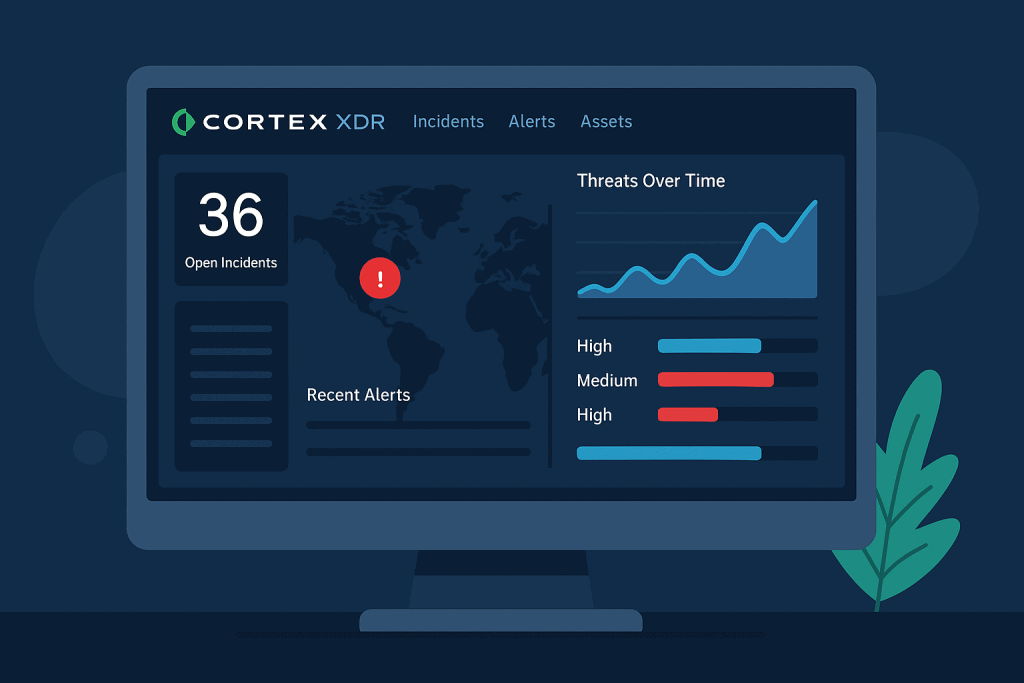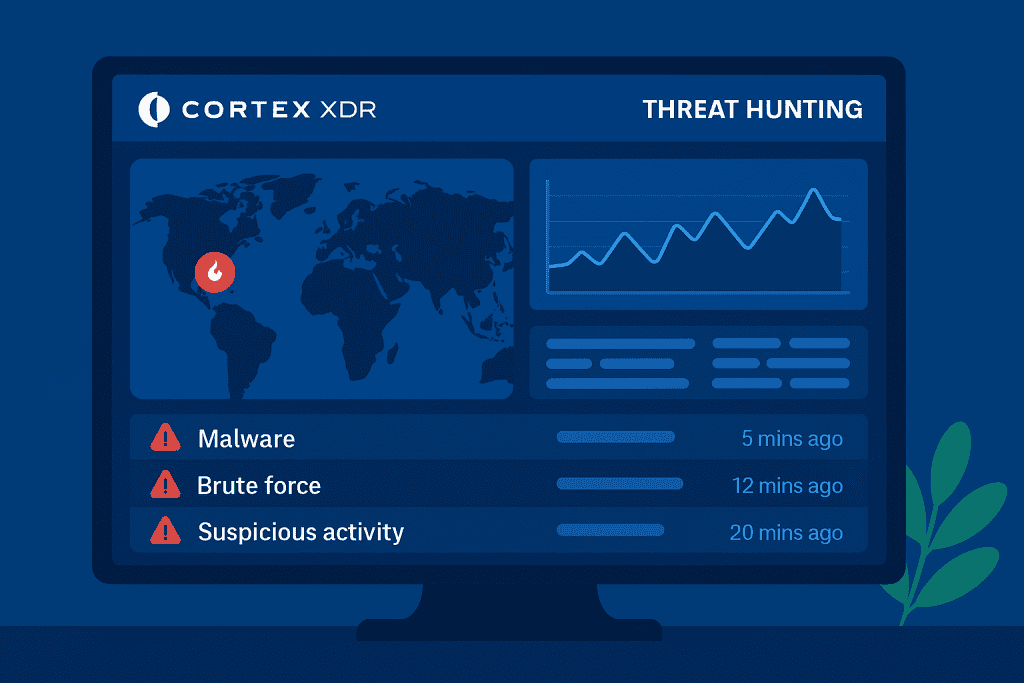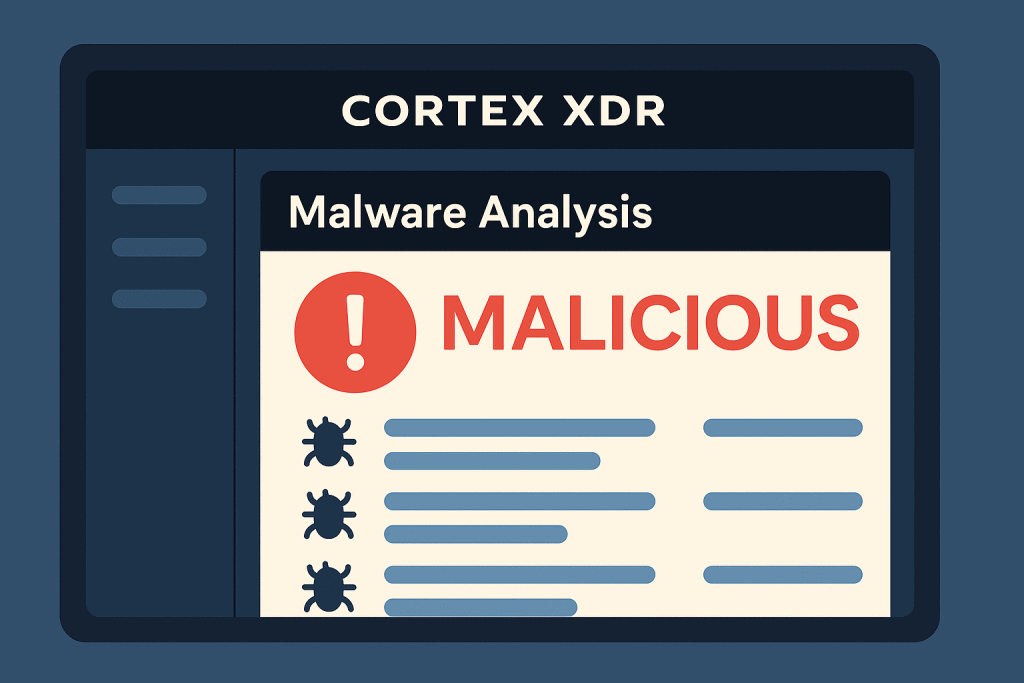
Cybersecurity threats continue to evolve faster than ever. Companies need tools that go beyond traditional detection to actively prevent attacks. This is where Cortex XDR comes in. It’s Palo Alto Networks’ answer to the growing complexity of enterprise security.
When I first worked with this XDR, I immediately noticed how it brought clarity to chaos. It reduced our alert noise and helped the security operations center focus on real threats. This review explains what Cortex XDR offers, who it’s best for, and why it matters in today’s digital defense landscape.
Overview of Cortex XDR
It is a comprehensive detection and response platform that connects data across endpoints, networks, cloud services, and third-party sources. It uses machine learning to spot patterns and block attacks before they escalate.
Key Features:
- Full visibility into endpoint, network, and cloud environments
- Behavior-based threat detection powered by machine learning
- Tight integration with Palo Alto firewalls and Prisma Cloud
- Automated root cause analysis and response actions
- Investigation timeline for quick incident analysis
- Threat intelligence from WildFire and AutoFocus
The platform aims to help organizations detect threats faster, investigate more efficiently, and respond with precision.
Top Use Cases
Choosing the right security tool depends on how well it fits your organization’s needs. Here are the most impactful use cases for Cortex XDR based on real-world deployments:
Ransomware Detection and Containment
This XDR tool tracks unusual behavior like rapid file encryption or privilege escalation. I’ve seen it block ransomware variants before they could spread across a network. It identifies attacks even when no file is involved.
Insider Threat Monitoring
Many breaches come from the inside. This security analytics engine watches for abnormal user actions, such as accessing sensitive data at odd hours or transferring large files. It helps security teams spot malicious insiders or compromised accounts.
Cloud Security Oversight
Cloud misconfigurations can lead to data exposure. With integrations into Prisma Cloud, this unified security platform detects policy violations and anomalous behavior across AWS, Azure, and GCP.
Faster Threat Hunting
Security analysts use this threat detection system to hunt for threats across all data sources in one place. It provides detailed logs and correlates activity, making it easier to trace suspicious behavior.
Streamlined SOC Operations

Most SOCs deal with alert fatigue. This XDR tool cuts through the noise by grouping related alerts. It gives analysts the tools to investigate and act faster, boosting overall efficiency.
These use cases show why Cortex XDR is a good choice for businesses facing complex cybersecurity challenges.
In-Depth Analysis of Cortex XDR
Understanding how Cortex XDR performs in real conditions is essential. Here’s a breakdown of its interface, functionality, integrations, and performance based on hands-on experience.
Design and Interface
The user interface is clean and highly visual. Important details are easy to find, and the dashboard offers a logical layout. For analysts, the investigation timeline is a major win. It lays out attack progression step by step, helping teams act quickly.
Functionality and Accuracy
What makes this XDR stand out is its behavioral analytics. It doesn’t rely solely on signature-based detection. Instead, it looks at context and behavior to identify threats. During testing, it detected lateral movement in a simulated attack that other tools missed.
It also performs automated root cause analysis. You can see exactly how a threat entered, what systems it touched, and what actions it performed. That level of insight saves hours during incident response.
Integration and Ecosystem Support
It works best within the Palo Alto ecosystem. It integrates with Palo Alto Networks firewalls, Prisma Cloud, and Cortex Data Lake. You can also connect it to external data sources through APIs.
While its full potential is unlocked in Palo Alto environments, the platform does support third-party integrations. It’s flexible enough for mixed environments.
Response Tools

Response capabilities include isolating endpoints, terminating processes, and executing scripts. While it doesn’t replace a full SOAR platform, it provides enough automation to respond quickly and limit damage.
Comparison
To make the right choice, it helps to compare Cortex XDR with other leading solutions like CrowdStrike Falcon and Microsoft Defender for Endpoint.
| Feature | Cortex XDR | CrowdStrike Falcon | Microsoft Defender for Endpoint |
|---|---|---|---|
| Native Firewall Integration | Yes | No | Yes |
| Behavioral Analytics | Advanced | Moderate | Moderate |
| Threat Intelligence | WildFire and AutoFocus | Threat Graph | Microsoft Threat Intel Center |
| Automation Capabilities | Moderate | High | High |
| UI and Dashboard | Intuitive | Advanced | Functional but less visual |
If your organization already uses Palo Alto tools, Cortex XDR offers a seamless extension. For teams starting from scratch, it’s still a worthy competitor, though it may involve a learning curve.
Pros and Cons
Here’s a balanced look at what makes Cortex XDR shine and where it might fall short.
| Pros | Cons |
|---|---|
| Seamless Palo Alto integration | Steep learning curve for new users |
| Effective behavioral threat detection | Best features tied to Palo Alto ecosystem |
| Clean, intuitive interface | Higher cost than basic EDR tools |
| Context-rich alerts reduce false positives | Limited automation without add-ons |
Conclusion
Cortex XDR is a powerful solution that addresses modern cybersecurity needs. It combines wide visibility, AI-driven detection, and streamlined investigations into one efficient platform. While it’s especially valuable for those using Palo Alto tools, even new users can benefit from its capabilities.
If your organization struggles with alert overload, blind spots in cloud security, or slow investigations, it could transform your defense strategy.
Rating
Security professionals across the industry praise Cortex XDR for its precision and usability.
⭐️⭐️⭐️⭐️☆ (4.5/5)
FAQ
What is Cortex XDR used for in cybersecurity?
Cortex XDR helps detect, investigate, and respond to cyber threats across endpoints, networks, and cloud systems. It provides full visibility and high-fidelity alerts to reduce risk.
How does Cortex XDR handle hacking attempts?
Cortex XDR uses behavioral analytics to catch indicators of compromise, like privilege abuse or unusual file execution. It blocks actions, isolates endpoints, and alerts your team in real time.
Is Cortex XDR easy to deploy and manage?
Deployment is straightforward, especially in Palo Alto environments. With proper training, security teams can manage alerts and responses with ease.
Resources
- G2. Palo Alto Networks Cortex XDR Reviews
- ParetoCyber. Cortex XDR Capabilities, Architecture, and Benefits
- Anomali. SIEM vs. XDR: Differences and Use Cases
- PeerSpot. Cortex XDR by Palo Alto Networks: Pros and Cons
- Heimdal Security. Sophos vs Palo Alto: Which Cybersecurity Vendor Wins?
